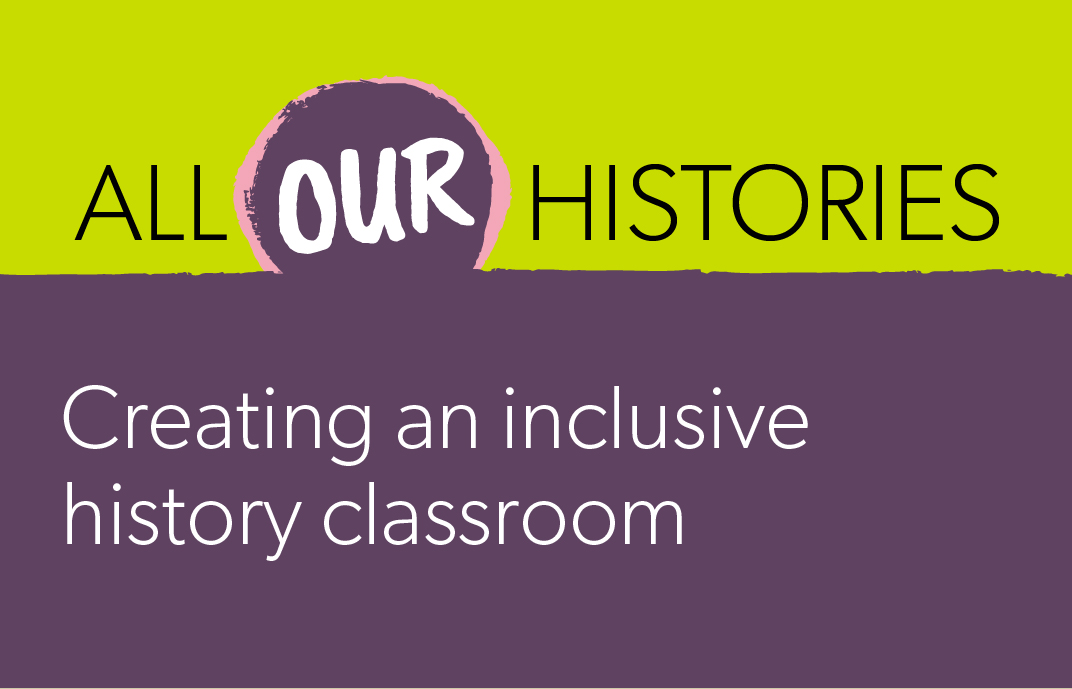Phillipa Vincent-Connolly shares four ways you can bring disability history into your History curriculum.
As teachers, we all have a duty of care to our vulnerable and SEN registered students. However, are we ignoring this duty when we fail to teach, and include the stories of disabled people on our history curricula? The Equality Act of 2010, is deeply founded in human rights, but does the history we teach represent the life experiences, and political and social struggles of disabled people of the past, and the recent past?
As a disabled teacher with cerebral palsy, a PhD researcher of disability history, trying to implement disability history into the curriculum, I would say, ‘no’. For context, I am a strong believer that we need disabled teachers in schools as role models, who should be trained as SENCos, as we have life experience, and training to deal with challenges, outside agencies, discrimination, physical disabilities, and learning difficulties, equipping us to be empathetic to those students who might be in our care.
How do we as History teachers show our students that being disabled is just another way of being human, and part of our society? As well as schools reflecting the diversity of our society – which at the moment, they do not – students should be able to engage with a curriculum that resonates and reflects their life experiences. We need to bring the voiceless, and underrepresented into our classrooms with confidence.
1. Build your subject knowledge
A starting point is research. There are some amazing historians researching disability history: some are researching Egyptian disability history, others are looking at the 1990s and the changing landscape of disability human rights. Connect with historians working in this field on social media to save valuable time in constructing histories of disability in Britain.
2. Link to topics you’re already covering
Link your themes to topics already studied on the National Curriculum, so that these histories ‘slot in’ to what is already being studied, rather than being a ‘bolt-on’.
Here are some examples:
- Students studying the Tudors could look at William Somer, or Jane ‘Fool’, who were companions to Henry VIII, with learning difficulties, or students could even look at Henry VIII’s inventory, of his wheelchairs, walking sticks, and megaphone (life-line call system), and the stairlift he used at Whitehall Palace.
- Explore institutions, and how disabled people were placed in asylums, hospitals, or workhouses during the industrial revolution. You might also consider the life experience of Joseph Merrick, The Elephant Man, in the Victorian period.
- Perhaps Kaiser Wilhelm II of Germany, with his disabled arm, could be used to explain why, before the outbreak of The Great War, he tried to compete in the naval race with other European countries, to prove his ability to rule.
- Early twentieth century figures such as Rosa May Billingshurst, the disabled suffragette who was a wheelchair user, could be included in your lessons on women fighting for the right to vote.
- You could bring lessons right up to date by looking at disabled peoples’ fight for their human rights with RADAR (now a part of Disability Rights UK), DPAC and others, to improve access to public spaces, to fight hate crime, and for overall equality for disabled people.
3. Connect with historians
Gain knowledge and connect with historians researching disability history, such as Dr Alexandra Morris, Dr Debby Sneed, Dr David Turner, Professor Suzannah Lipscomb, Simon Jarrett, Dr Rosamund Oates, myself, and others in the field, who will be only too delighted to share their expertise.
4. Draw on first-hand accounts to dispel ignorance
Teachers sometimes feel like novices in this area of study, and we need to be sensitive to the language used around and in disability history, as well as ableism, discrimination, and tropes. One way to discuss disability history is through its various models, such as cultural, medical, and social. Disability history is intersectional, and as such has the ability for these issues to be discussed across the curriculum in History, R.E., PSHE, and in diversity assemblies.
We need to present disabled people as role models in our society, so that SEN students can visualise themselves reflected in our communities. All students need to have explicit, positive role models with whom they can identify, and unless we are open to teaching disability history, our students can never be enriched in this way.
Phillipa Vincent-Connolly is an historian, writer, and published author of historical fiction and non-fiction. Her book, ‘Disability and the Tudors’, is the first book in a series on disabilities in specific eras and benefits from Phillipa’s own experience of living with Cerebral Palsy.
She achieved her degree in History and Humanities in 2011 and her PGCE, QTS, in 2014, and NQT 2019, in teaching (Secondary), and her MA in 2020. She is currently working towards her PhD at Manchester Metropolitan University specialising in Tudor disability history.
